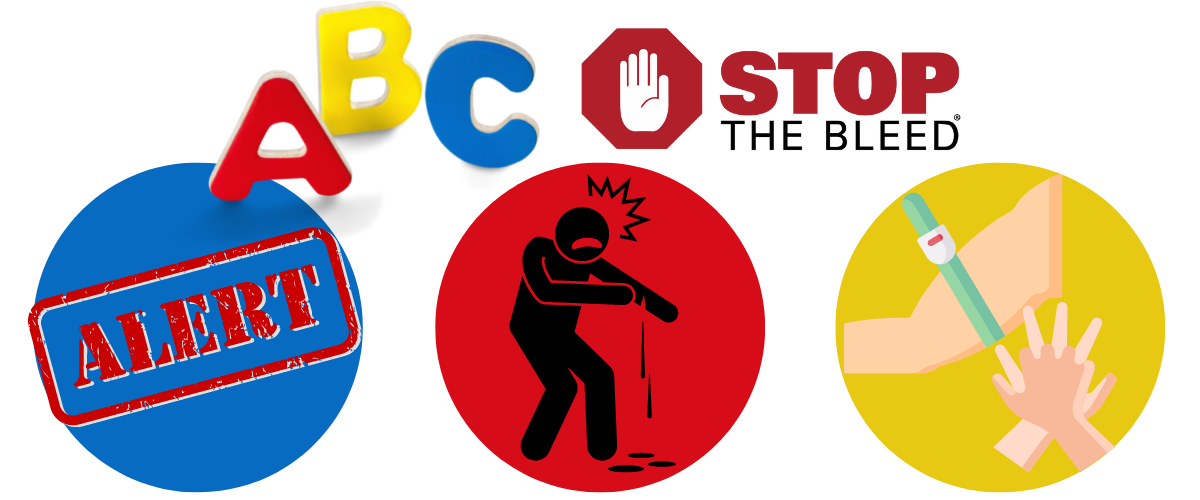Stop the Bleeding, Stop the Dying
JUPITER, FL / AGILITYPR.NEWS / July 08, 2022 / Stop the Bleeding, Stop the Dying
Crucial Training when an Active Shooter Strikes
Did you know that the #1 preventable death in a violent attack, like an active shooter, is bleeding? A bleeding injury can happen anywhere and for many reasons, but in an active shooter situation, stopping victims from bleeding out can be a critical component in reducing lives lost.
Stop the Bleed is a grassroots national awareness call-to-action that encourages bystanders to become trained, equipped, and empowered to help in a bleeding emergency before professional help arrives. The basics include treating life-threatening bleeding using tourniquets, wound packing, and pressure dressings.

ABCs of Bleeding Control
In an urgent and fast-moving emergency situation, everyone needs to think fast and act fast. This is almost always necessary to do if a victim is bleeding badly and is needed well BEFORE help arrives. If you are present in an emergency situation and someone is seriously injured and bleeding, its helpful to remember the ABC's to stop the bleed.

(A) - Alert for HELP

(B) - Bleeding - Find the Source
Look for:
- Continuous bleeding
- Large-volume bleeding
- Pooling of blood
There may be multiple places the victim is bleeding from and clothing may also hide life-threatening bleeding.

(C) - Compress
Pressure
- Apply direct pressure to the wound (the majority of external hemorrhages can be controlled in this manner).
- Focus on the location of the bleeding
- Use just enough gauze or cloth to cover the injury
- If pressure stops the bleeding, keep pressure on the wound until help arrives
Packing
- For large wounds, superficial pressure may not be effective
- If bleeding is from a deep wound, pack gauze (or cloth) tightly into the wound until it stops the bleeding;
- Hold pressure until help arrives
Tourniquet
- Tourniquets only work on limb injuries, not trauma to the head or torso.
- Apply 2 to 3 inches above the wound
- Do not place over the elbow or knee
- Tighten tourniquet until bleeding stops
- Do NOT remove the tourniquet unless directed to do so by a medical professional
- Can apply to others or on yourself
- Can be applied over clothes
- A second tourniquet may be required to stop the bleeding
About Tourniquets
If someone is bleeding extremely heavily from either a major artery or vein, they can quickly lose a lot of blood. The bleeding is likely to pulsate in time with the heart. This is more pronounced with an arterial bleed, but happens within venous bleeds too. With extremely heavy, potentially catastrophic bleeding an adult could easily lose 40% of their blood volume in 3-4 minutes. This could be even quicker when dealing with children. If a casualty loses a substantial amount of blood the body is no longer able to compensate for that amount of blood loss. They will develop hypovolaemic shock.1
Hypovolemic shock is a dangerous condition in which your heart can’t get your body the blood (and oxygen) it needs to function. This happens because you’ve lost a large amount ― more than 20% ― of your blood volume. If left untreated a victim will die.
Studies show that when used properly under the right circumstances, tourniquets can help control bleeding and save lives. However, if a tourniquet is needed in an emergency, chances are you may not have a professional one handy. In these cases, it is relatively easy to improvise a tourniquet.
PLEASE NOTE: Tourniquet use is temporary and short-term only (2 hours or less), although there is no research that indicates exactly the time limit before the lack of blood supply starts to cause tissue death (necrosis), as all people are physiologically a little different.
How to Improvise a Tourniquet
- Material - a band of some sort to wrap around the extremity. Good material options include Neck Ties, Scarves, bandanas, fabric long enough to wrap around the limb, and ace bandages. Bad material options include Belts and zip ties.
- Windlass - rigid object to twist the material (hand tightening is ineffective). Good options include sticks, broom handles, and carbiners. Bad options include pens and pencils as they are likely to break under the pressure.
- Securing mechanism - something to keep the windlass from unwinding like a hair tie, keyring, or rubber band.
Once the tourniquet is properly in place, you should be able to detect a pulse above the tourniquet but not below it.
Immediate Action Can Save Lives
By reacting quickly during a bleed emergency, bystanders can significantly increase the chances of victim survival. Time is a vital component in these fast-moving and dynamic situations which is why civilians can be better protected by learning the basics of emergency protocol and survival. If you are interested in learning more about active shooter response training (which includes Stop the Bleed), please connect with us today.
You can also learn more about the patented ASR Threat Alert System here.
Contacts

Shay Discepolo
Media
shay@asralertsystems.comJupiter, FL
Phone: 800-722-7601
https://www.asralertsystems.com/blog/stop-the-bleed